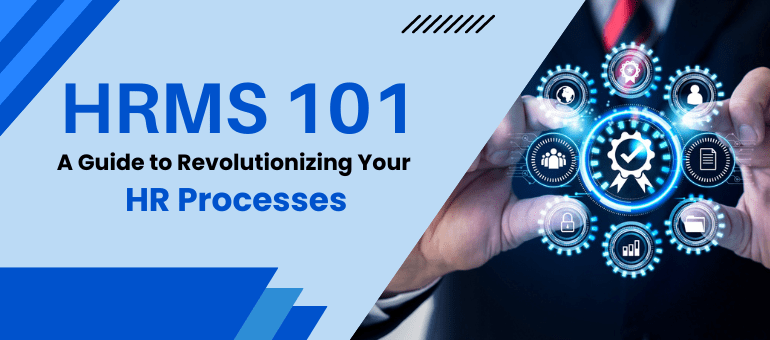HRIS versus HRMS: Grasping the Fundamental Contrasts
In the realm of human resources, professionals encounter an array of abbreviations pertaining to software, including HRIS, HRMS, HCM, HRD, and HRM. While certain distinctions are evident among these systems, others engender perplexity due to their interchangeable usage. This discourse aims to elucidate the disparities between HRIS and HRMS, facilitating the selection of the optimal solution for organizational needs.
The Essence of HRIS
HRIS, denoting Human Resource Information System, embodies software engineered to collate and arrange data concerning individuals within an enterprise. Though features may vary among providers and entities, the core objective of HRIS lies in streamlining HR operations for enhanced efficacy across stakeholders.

HRIS typically encompasses an array of functions pivotal for the seamless operation of HR departments. Notable features include:
- Talent Acquisition: This facet aids in job postings, application tracking, and resume management.
- Learning and Development: HRIS facilitates the onboarding of new hires and offers ongoing training opportunities for incumbents.
- Compensation and Benefits Administration: HRIS software facilitates the management of employee remuneration, leaves, healthcare coverage, and other perks.
- Self-service Capabilities: Employees, managers, and prospective candidates can leverage HRIS platforms for accessing personal data, completing forms, and more.
- Workflow Optimization: HRIS systems empower organizations to devise and refine productive workflows, particularly within HR domains.
Over time, the feature repertoire of HRIS platforms has expanded, blurring the demarcation lines between various HR software categories.
Must read: The Best Way to Track Your Field Service Team Attendance
Unveiling HRMS
HRMS, an acronym for Human Resource Management System, boasts a broader purview and footprint within organizational frameworks compared to HRIS. It serves as a comprehensive solution for overseeing HR endeavors, typically encompassing all HRIS functionalities and beyond.
Supplementary features offered by HRMS may vary based on provider offerings and organizational exigencies. However, common features found in HRMS software include:
- Time and Attendance Oversight: HRMS systems often integrate features facilitating the tracking of employee work hours, attendance records, and leaves.
- Payroll Administration: HRMS platforms streamline salary processing, tax computation, and direct deposit arrangements.
- Performance Evaluation: HRMS software typically includes tools for establishing performance metrics, conducting assessments, and furnishing feedback to employees.
- Analytical Insights and Reporting: HRMS systems boast advanced analytics capabilities, enabling organizations to generate comprehensive reports and integrate data with other software suites.
- Regulatory Compliance Management: HRMS software aids organizations in navigating and adhering to pertinent laws and regulations, particularly in multinational operational contexts.
The high degree of configurability and adaptability inherent in HRMS platforms enables organizations to tailor the software to meet their bespoke requirements. Premier HRMS solutions extend robust support for managing HR functions across diverse geographical domains, catering to local regulatory nuances and mandates.
Must read: The Power of HR Software in Enhancing Absence Management
Selecting the Optimal HRIS or HRMS Solution
HRIS versus HRMS: Navigating the Selection Conundrum
When delineating between HRIS and HRMS, it is imperative to assess organizational requisites meticulously. Does the organization necessitate an all-encompassing solution capable of addressing myriad HR facets, including payroll administration and sophisticated analytics? Or does it mandate a streamlined solution emphasizing organization and operational efficiency, empowering HR personnel to foster high-performance teams?
Once the organizational imperatives are identified, the onus shifts to selecting the apt software solution. It is prudent to consider budgetary constraints, solicit input from internal stakeholders, engage in consultations with vendors, and conduct hands-on evaluations of diverse systems prior to reaching a verdict.
Effective deployment of an HRIS or HRMS system can yield profound ramifications on the productivity and operational efficiency of HR teams. With the right software infrastructure in place, organizations can automate mundane tasks, optimize workflows, and pivot towards strategic HR initiatives conducive to organizational advancement.
Must read: What is a Performance Management System: A Complete Guide
In Summation
Discerning the nuances between HRIS and HRMS is pivotal for HR professionals endeavoring to deploy a fitting software solution for their organizational milieu. While HRIS accentuates streamlining HR operations, HRMS offers a holistic array of functionalities.
By methodically scrutinizing organizational exigencies and evaluating the distinctive attributes of each software option, stakeholders can make judicious decisions, opting for the solution that aligns seamlessly with their HR imperatives.
Recall, the judicious selection of HR software, whether HRIS or HRMS, holds the potential to revolutionize HR operations, fostering heightened efficiency, enriching employee experiences, and ultimately, fortifying organizational outcomes.



